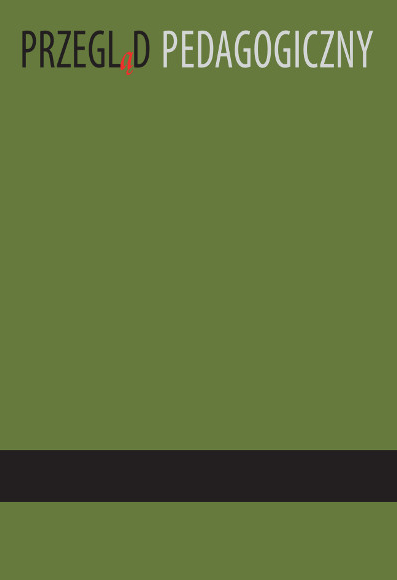How to help students to learn mathematics in schools in Poland
DOI:
https://doi.org/10.34767/PP.2019.01.19Keywords:
mathematics, contemporary mathematics, algorithmic thinking, computational thinking, mathematical education, core curriculum, matura examination, equal opportunity, equal outcomeAbstract
The quality and effectiveness of teaching mathematics in Polish schools is able to save a strategy of equal
opportunity, that is, focusing on the student, his individual abilities, interests and needs, in contrast to the
efforts to prepare all students according to teaching programs based on the same core curriculum to the same exams, which, as shown in the NIK Report, harms primarily the students themselves. Implementation of the recommendations of the Report, however, is not able to change dramatically the current state. A chance for
change is the orientation of students’ mathematical education to their individual abilities and interests. It
is also important to include in mathematics education the evolution of mathematics itself in today’s world,
to prepare students for the challenges they will face in almost every area of personal and professional life.
References
Gruszczyk-Kolczyńska E. (2019). Diagnoza kryzysu w matematycznym kształceniu dzieci oraz rekomendowane działania naprawcze. Zaczerpnięte 24 września 2019.
Guralnik D.B. (red.) (1969). Webster’s New World Dictionary of the American Language Enlarged from the Concise Edition with Student Handbook. [b.m.]: The Southwestern Company.
Hartman J. (2019). Lwy oświecenia i matematołki. Polityka. Zaczerpnięte 24 września 2019.
Makiewicz M. (2019). Opinia w przedmiocie diagnozy problemów związanych z procesem nauczania matematyki w szkole (począwszy od IV klasy szkoły podstawowej) wraz z odpowiednimi rekomendacjami. Zaczerpnięte 24 września 2019. S
Newsweek Edukacja. Zaczerpnięte 24 września 2019.
NIK. Informacja o wynikach kontroli. Nauczanie matematyki w szkołach. Zaczerpnięte 24 września 2019.S
NIK. Matematyka do poprawy. Zaczerpnięte 24 września 2019.
PISA (2012). Results in Focus. What 15-year-olds know and what they can do with what they know. Zaczerpnięte 24 września 2019. S
Polya G. (2009). Jak to rozwiązać. Warszawa: Wydawnictwo Naukowe PWN.
Steinhaus H. (1965). Przemówienie wygłoszone przy nadaniu doktoratu honorowego przez Uniwersytet im. Adama Mickiewicza w Poznaniu. Wiadomości Matematyczne, 8(2), 119-125.
Sysło M.M., Kwiatkowska A.B. (2014). Learning mathematics supported by computational thinking. W: G. Futschek, C. Kynigos (red.), Constructionism and Dreativity (s. 258-268). Wiedeń: Austriackie Towarzystwo Informatyczne.
Sysło M.M. (2018). Jak myśleć komputacyjnie. W: A.B. Kwiatkowska, M.M. Sysło (red.), Informatyka w Edukacji. Myśl komputacyjnie! (s. 3-14). Toruń: Wydawnictwo Uniwersytetu Mikołaja Kopernika.
Szyłło A. (2014). Niszczarka marzeń. Rozmowa z Marzeną Żylińską. Gazeta Wyborcza. Duży Format. Zaczerpnięte 24 września 2019.
Śliwerski B. (2007). Wstęp. W: J. Holt, Zamiast edukacji. Warunki uczenia się przez działanie. Kraków:Oficyna Wydawnicza Impuls.
Wing J. (2006). Computational thinking, Communications of the ACM 49(3), 33-35.

